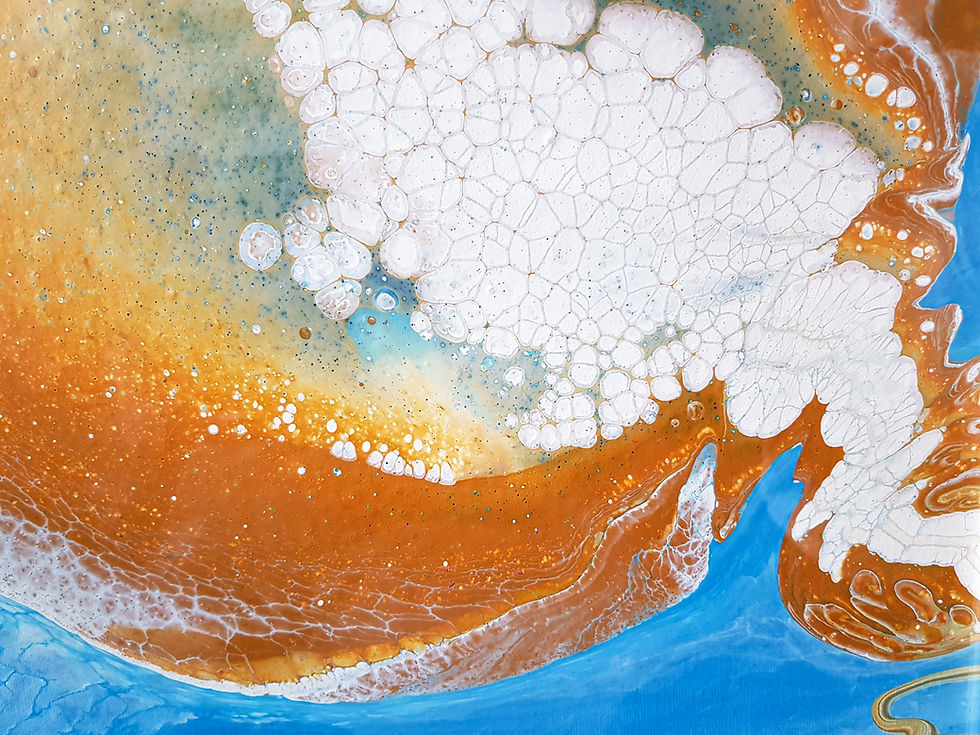Small Changes, Big Impact: Low-Waste Tools for Creative Businesses
- Jennifer Boyer
- Jun 26
- 3 min read
As creatives, our work shapes culture, tells stories, and builds community—but it also consumes resources. Between packaging, prototypes, shipping supplies, marketing materials, and endless digital drafts, the impact of a creative business on the planet can quietly add up.
But here’s the good news: you don’t have to overhaul your entire process to make a difference. In fact, some of the most meaningful shifts come from small, intentional changes. In this post, we’ll explore low-waste tools and sustainable swaps that are practical, affordable, and aligned with the values many of us hold as artists, makers, and mission-driven entrepreneurs.
Why Low-Waste Matters for Creatives
Creatives often set trends, influence consumer behavior, and shape what people care about. That means when we embrace low-waste practices, we’re not just reducing our own footprint—we're modeling change for others too.
Whether you run an Etsy shop, record music, design digital products, or offer services, every step of your workflow is an opportunity to create with more care for the planet.
Low-Waste Tools and Swaps for Creative Businesses
Here are some low-waste ideas tailored to various types of creative entrepreneurs—from musicians to makers to digital designers:
1. Eco-Friendly Packaging
If you sell physical products (like art prints, jewelry, or candles), packaging is one of the easiest places to reduce waste.
Use recyclable mailers or compostable shipping bags (brands like EcoEnclose or Noissue are great).
Replace bubble wrap with shredded paper, cornstarch peanuts, or reusable cloth scraps.
Include a small note explaining your packaging choices—it builds connection and educates customers too.
2. Digital-First Wherever Possible
Sometimes low-waste means doing less physically:
Offer downloadable versions of zines, sheet music, posters, or planners.
Host workshops or events online instead of in person.
Use cloud storage and collaborative docs to avoid printing drafts or creating excess paper clutter.
3. Low-Waste Art & Studio Supplies
If you’re a visual artist, musician, or crafter, try these swaps:
Refillable pens, brushes, and markers instead of disposables.
Cotton rags instead of paper towels in your studio.
Buy materials in bulk or secondhand (check out thrift stores, community swap groups, or sites like Scrap or Creative Reuse Centers).
Reuse old materials for prototypes or test runs.
4. Sustainable Merch
Musicians, podcasters, and creators who sell merch can make a big difference with better sourcing:
Choose organic cotton or recycled fabrics for shirts and totes.
Offer pre-orders to avoid overproduction and waste.
Work with local print shops that use water-based inks and eco-conscious methods.
5. Digital Tools to Track & Reduce Waste
Let tech work for you:
Use Trello, Notion, or Asana to organize your process digitally.
Track your resource use in a spreadsheet or app like JouleBug or Greenify.
Use time-tracking apps to reduce burnout—emotional waste is real, too.
Mindful Habits That Add Up
Sometimes the best low-waste practices aren’t about tools at all—they’re about habits:
Ask, “Do I really need to print this?”
Build buffer time into your creative process to avoid rushed, wasteful decisions.
Commit to one low-waste experiment per quarter, and reflect on what worked.
Creativity Is a Renewable Resource
Remember, sustainability doesn’t mean perfection. It’s about doing what you can, with what you have, where you are. As artists and entrepreneurs, we’re in a unique position to not just consume culture, but to shape it—and that includes imagining new, more sustainable ways to create.
So try that swap. Simplify that process. And keep showing up.
Because small changes really do lead to big impact.
What’s one low-waste shift you’ve made in your creative practice lately? Share it in the comments or tag us @CreatingWithImpactPod on Facebook or Instagram. Let’s inspire each other to create with care.



Comments